What is better to buy - a convector or fan heater? Comparative review
In the offseason, when it is already cold and damp, sales of electric heaters are growing sharply. The most popular types of appliances are convectors and fan heaters. They are inexpensive, compact, warm rooms perfectly and are in approximately the same demand.
And yet there is a significant difference between them. In this article, we will figure out what is best - a convector or fan heater for heating a house, closely examining each type of heater. We also dwell on the principle of operation and the design of each of them, and provide a list of the best equipment manufacturers according to buyers.
The content of the article:
Features of the use of heating appliances
Fan heaters and convectors are often bought for apartments in high-rise buildings, but sometimes they are also needed in houses. In an apartment, the heater performs the functions of the main heating in cold weather, and in a private house the owner can use it as an additional and / or alternative.
Also, appliances are installed in rooms that need a special temperature regime (children’s, bathrooms, etc.).
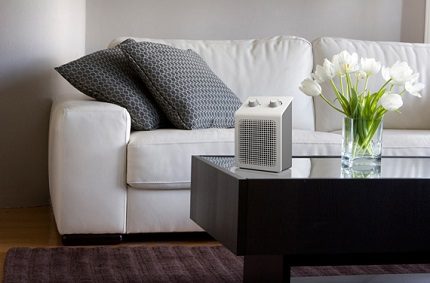
The basis of a sensible choice of any device is an understanding of the principle of its operation, device, disadvantages and advantages. There is no ideal and universal technique, so you need to figure out which models are best suited for specific operating conditions. You should also decide on your own needs, priorities and expectations.
The device and principle of operation of the electroconvector
To create a favorable microclimate, it is necessary to take care of a comfortable temperature and sufficient humidity in the room.
If the central heating is turned off or its power is not enough, the room becomes cold and damp. Electroconvector perfectly solves this problem. It acts as a heater and eliminates excess moisture without overdrying the air.
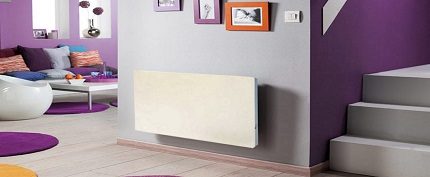
The principle of operation of the heater is based on heat transfer using convection. For the intake of cold air, holes are provided in the lower part of the housing. The flow passes through the heater, its temperature rises instantly, and warm air masses are distributed throughout the room. This circulation occurs while the convector is on.
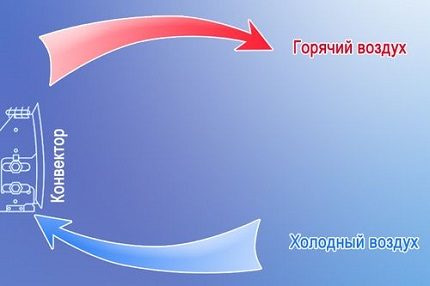
Due to the large area of the heating element, the air heats up quickly. However, the heater does not hold the temperature, so after turning off the convector the room just as quickly cools down.
If you need to achieve a stable temperature regime, you should choose a high-quality modern model with a temperature regulator and protection against overheating.
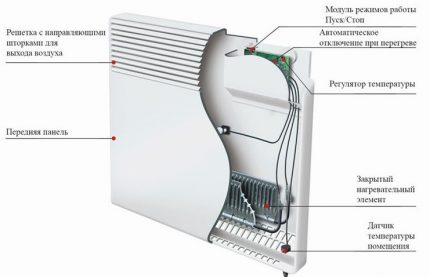
Manufacturers produce models of various types - electric, water, gas, but electroconvectors are most often found on sale. They are in demand among domestic buyers. Gas or water models are occasionally acquired by owners of private houses, cottages, and for apartments these devices are usually inconvenient.
A detailed analysis of the types of convector heaters, the principle of their operation and recommendations for selection, we gave in next article.
Electric convectors differ in the type of placement, are floor and wall. The former are usually narrow and long, while the latter are larger, but do not take up space on the floor.
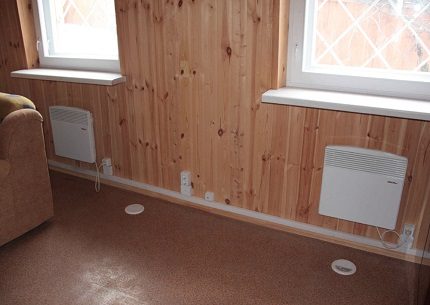
When choosing a model by type of location, one should take into account not only their convenience, but also the features of air heating. Floor convectors evenly heat the room, and mounted convectors are suitable for people who need to create a warm zone in the room.
In more detail, the question of choosing an electric convector, taking into account the most important criteria, we reviewed here.
What rooms are the appliances suitable for?
It makes sense to install the convector either where cold air comes from (near the window), or in areas that need to be warmed up especially carefully (next to the sofa, by the crib, etc.). The height of the ceilings should also be taken into account, as heated air goes up. The greater the distance, the more it cools down and enters the heater already too cold.
Electric convectors are ideal for small spaces with low or standard ceilings. If the ceiling height is 3 m or more, it is better to choose one or more fan heaters so that they instantly warm up and mix the air, avoiding strong cooling.
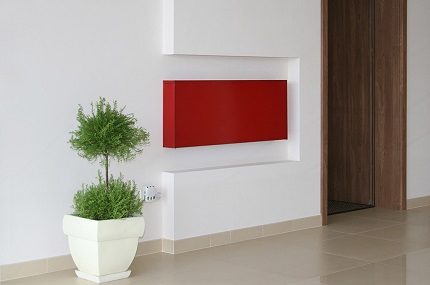
Pros and cons of equipment
The main advantages of the devices:
- High speed air heating. According to this indicator, convectors are inferior to fan heaters, but they heat rooms faster than radiators and oil heaters.
- Safety. The body of the device always remains relatively cold, which eliminates the possibility of burns or fires. If the electric convector is working, it can be safely placed in the children's room, without worrying about the health of the child.
- Uniformity of air warming. One of the important criteria for choosing a heater. For local heating of individual areas of the room, you can use fan heaters or infrared heaters, and in order to achieve approximately the same temperature in all parts of the room, it is better to put a convector.
- Auto shut off. Even the cheapest modern convectors are equipped with protective mechanisms and temperature sensors. If you choose a quality device of a trusted brand, you can be sure of the reliability of automation. The convector does not have to be controlled.
- Silent work. Unlike a fan heater, a convector is devoid of blades that make noise during rotation.
- Maintaining normal air humidity. One of the advantages of convectors compared to fan heaters is that they do not dry the air. Too low humidity can damage human health no less than constant dampness.
The advantages of convectors include simple installation. Floor mounted simply installed in a convenient place, and wall mounted on two durable mounts, which usually come with the device.
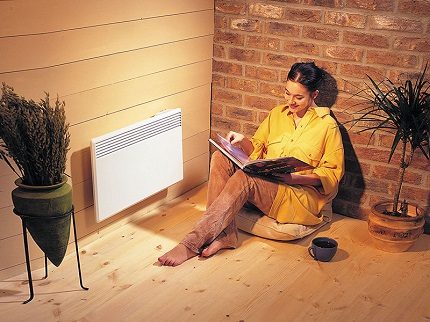
However, in installation and operation there are no special differences with the fan heater. But repairing a convector is most often cheaper. Many breakdowns can be fixed independently, as the design is simple and there are no moving parts.
A few words about trusted brands
When choosing a brand, one should compare not only the technical characteristics of the models, but also the manufacturing countries. All things being equal, it makes sense to prefer domestic heating equipment.
Firstly, it is usually cheaper. And secondly, manufacturers of household appliances in the post-Soviet space take into account the possibility of power surges.
Among the best manufacturers, users and experts name the following brands: Noirot, Nobo, Timberk, Electrolux, Heater, Atlantic, Roda, Balu.
Domestic convectors usually without any problems withstand even sudden voltage drops from 150 to 242 V.
Some models are equipped with separate control units that are designed to control several devices at the same time. They allow you to adjust the temperature in each room. This technique is ideal as the main heating of the house.
The main characteristics of the fan heater
Fan heaters are inexpensive and effective appliances that they buy for heating residential, administrative, and industrial premises.
By choosing the right model, you can create a warm zone within a few minutes. To do this, you just need to point the fan heater in the right direction and turn it on.
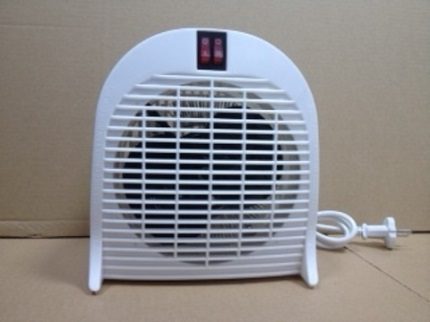
Dimensional stationary models are installed on the floor or mounted on the walls, and mobiles are easy to carry, rotate, rearrange.
Cases of devices do not overheat, so there are no special requirements for surfaces. Fan heaters put on any floor coverings, tables, curbstones.
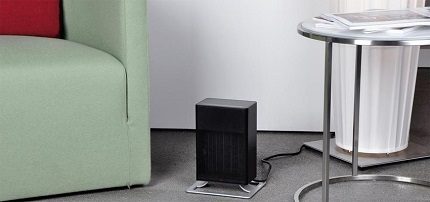
The principle of operation of the device
The principle of operation is simple: cold air enters the closed or open heating element, instantly warms up, and the fan throws it out.
It turns out the effect of a warm wind, which blows around people and objects in the room. Heated air flows are mixed with cold, so that a comfortable temperature is quickly established in the room.
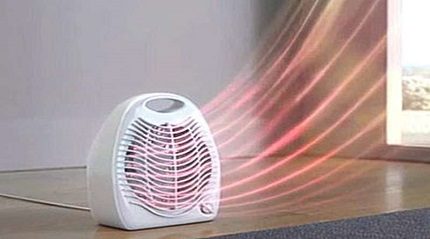
When choosing, they are guided by the desired power, noise level. Recommended to see detailed recommendations at the choice of a fan heater, taking into account key criteria.
The type of heating element of the fan heater also affects the choice, depending on which these types of devices are distinguished:
- Spiral. Heaters are made of spiral nichrome wire. In working condition, their temperature can reach 800 ° C. Despite their high efficiency, these heaters are not considered the best choice, as during operation, dust and moisture are burned.
- TENOVye. The temperature of the heating element does not exceed 200 ° C, however, this does not affect the quality of work due to its large area. Models are fireproof, comfortable, but more expensive than spiral ones.
- Ceramic. Elements heat up much less - up to 200 ° C, do not burn air. They are absolutely safe and easy to operate.
Spiral models have almost lost their popularity among buyers. Because as a result of their work, the air becomes overdried, an unpleasant smell appears.
The most preferred option, users call a ceramic fan heater. This is the best choice for today. If you buy a model of a reliable brand, it will serve for a long time and without fail.
Advantages and disadvantages of fan heaters
The advantages of fan heaters include compactness, high speed of air heating. Almost all models are equipped with panels for adjusting operating modes, temperature sensors, and some also have remote controls.

Fan heaters also have disadvantages: noise during operation and uneven heating of the room.
As for noise, it is impossible to completely solve this problem. Rotating fan blades will make sounds anyway. The noise may be greater or less, but always will be. You have to put up with this.
A brief overview of the best brands
The same companies that produce the most reliable convectors are leading in the ratings of the best manufacturers of fan heaters: Ballu, Timberk, Vitek, Electrolux, Saturn, Polaris, AEG, NeoClima, Scarlett, Teplomash and others.
When choosing a fan heater or convector, it is worth considering that many of them are assembled in China. It is better to pay attention to manufacturers who strictly control the quality of products and buy models of those brands with well-organized work of service centers.
You decided to get a fan heater, but do not want to overpay for a brand? In this case, you can assemble a homemade fan heater from improvised materials.
What type of heater is better to choose?
It all depends on the goals of the owner of the premises. If you need to achieve uniform heating of the entire area, and the speed is not essential, then it is better to put a convector.
If the main goal is to get a directed flow of hot air and instantly heat a specific area in the room, the fan heater will be the best choice.

In residential premises, convectors are more often installed due to the absence of noise, and for an office, where there are always some sounds, a fan heater is appropriate.
None of the above devices are suitable for you? We recommend that you familiarize yourself with the most popular types of heaters for home and apartment, and tips for choosing the best.
Conclusions and useful video on the topic
There are many heaters - good and different. An extensive assortment is confusing, and intrusive advertising only confuses the choice. We offer videos that will help determine priorities and buy a model that is right for you.
To choose, you need to clearly understand what exactly you expect from the device. The video will help determine the parameters:
The efficiency of household appliances is of fundamental importance. How to choose the most effective model is described below:
Honest feedback from real users always matters:
The technique sometimes breaks down. We offer fan heater maintenance instructions:
DIY instruction manual for convector repair:
If you have already decided what is best to buy - a fan or convector, pay attention to some nuances. Any heater should be compact, economical, have a system of protection against overheating.
Take a look at models with air ionizers, remote controls. These are very convenient additional functions that will help make heating not only efficient, but also convenient.
Have you already chosen the optimal type of heater for yourself? Or are you still in doubt and want to clarify a certain point? Ask your questions below - our expert will try to help you.
Or maybe you want to add useful information on the topic of the article, point out inaccuracies or discuss a controversial issue? Write your opinion in the comments - our experts and site visitors who own the subject will be happy to support a constructive dialogue.

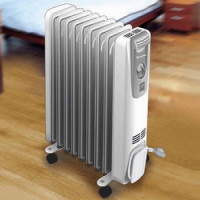 Which heater is better to choose for home and apartment: a comparative overview of units
Which heater is better to choose for home and apartment: a comparative overview of units 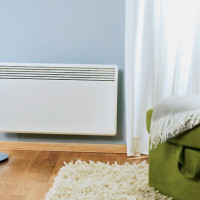 How to choose a convector heater: a comparative review and recommendations before buying
How to choose a convector heater: a comparative review and recommendations before buying 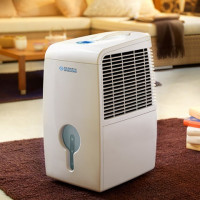 How to choose a fan heater: what parameters to navigate when choosing equipment
How to choose a fan heater: what parameters to navigate when choosing equipment 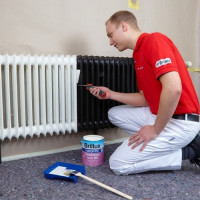 What paint to paint heating radiators: a comparative overview of the types of paint for batteries + the best manufacturers
What paint to paint heating radiators: a comparative overview of the types of paint for batteries + the best manufacturers  DIY gas convector: installation steps for factory-made appliances + homemade assembly
DIY gas convector: installation steps for factory-made appliances + homemade assembly  How much does it cost to connect gas to a private house: the price of organizing gas supply
How much does it cost to connect gas to a private house: the price of organizing gas supply  The best washing machines with dryer: model rating and customer tips
The best washing machines with dryer: model rating and customer tips  What is the color temperature of light and the nuances of choosing the temperature of the lamps to suit your needs
What is the color temperature of light and the nuances of choosing the temperature of the lamps to suit your needs  Replacement of a geyser in an apartment: replacement paperwork + basic norms and requirements
Replacement of a geyser in an apartment: replacement paperwork + basic norms and requirements
Just now we are discussing with my husband this topic - which convector to buy in the country: gas or electric. I insist on the latter, very afraid to use gas in a wooden house. My question has arisen: is it true that gas convectors heat a room faster than electric ones? So my husband claims.
And I want to write about the fan heater: in our office the most usual Calore fan heater has been used for several years now - it heats a room of 16 m in a matter of minutes, it buzzes, but we don’t notice at all, we’re used to it.
Last year, it got colder in our city early in the fall, and heating was turned on as scheduled, at least in our quarter. I had to urgently buy a fan heater. I bought a small one, put it under my feet (I work at home, put it under a computer table, it’s near my window). So by the end of the day my head started to hurt so much that I had to go out onto the balcony and take a breath. Is it from noise or from heating the air with a fan? Is it possible to somehow avoid such consequences?
The fan heater heats the room faster, but dries the air very much, while convectors do not dry the air so much, but they heat the room slowly.
It was dry air that caused you to get a headache and difficulty breathing.
The easiest way to minimize this negative effect is to put a mug of water near the fan heater. A folk method that is safe and works. But the best solution would be to buy a humidifier. This device will help you breathe easily and freely, not only during the heating season, but also at other times of the year.
I also highly recommend switching to heating using a convector. It is silent, does not dry the air like that and is safer to use.
We also thought for a long time about what to install in a private house as an addition to the main heating. Discussed with his wife, sorted out the issue with his uncle and brother. Ultimately, the convector was the first to finish.
Despite the fact that the fan heater has mobility, there is one thing. We are expected to add to the family, and heating pipes do not reach the children's room. Therefore, we settled on a floor-mounted, electric model with a temperature regulator and protection against overheating. There is a place for installation, it does not interfere and fits into the interior. Installation is not complicated, does not take much time and the heating area is small. So if you have a child - this is the best option in my opinion !!